How Commercial Landers Are Changing Lunar Exploration
These companies are taking a faster, cheaper approach to landing on the moon
:focal(500x376:501x377)/https://tf-cmsv2-smithsonianmag-media.s3.amazonaws.com/filer_public/26/fc/26fc44d9-a1cb-4704-ba0c-d1df6b786afd/20n_fall2023_commlunarlander-artemisi52507883571_396b3c1c6c_live.jpg)
At the new Moonshot Museum in Pittsburgh, visitors can tour a lunar habitat, design a mission patch, and even build their own model rovers. But the star attraction—behind floor-to-ceiling windows—is a clean room where technicians can be seen working on landers and rovers that, if all goes according to plan, will be the first U.S. missions to touch the surface of the moon since 1972.
This glimpse into the future is made possible by Astrobotic Technology, which houses the museum in the front of its sprawling 47,000-square-foot headquarters. Astrobotic is one of several private companies that has been awarded a contract by NASA to develop reliable lunar delivery systems under its Commercial Lunar Payload Services (CLPS) initiative. This new generation of landers would deliver cargo for scientific research, commercial development, and exploration—all part of NASA’s long-term plans for Apollo’s successor program Artemis, which envisions an ongoing human presence on the lunar surface. Astrobotic’s initial project, the six-by-eight-foot Peregrine Lunar Lander, will deliver nearly two dozen payloads from six nations.
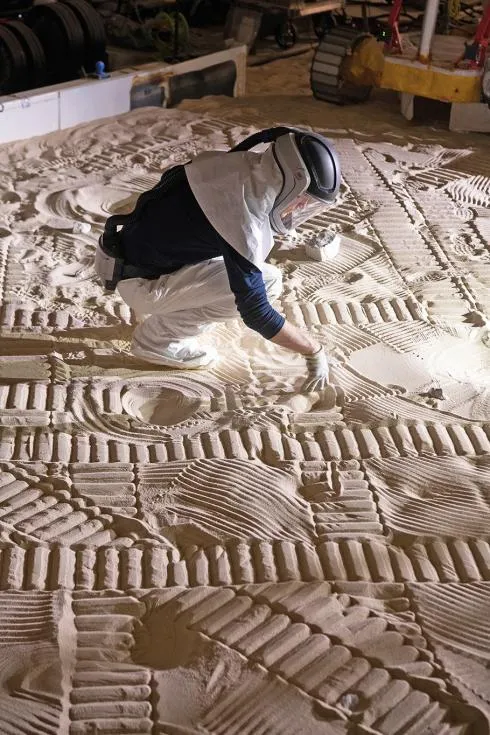
“We are engineers building science fiction,” says Andrew Jones, Astrobotic’s director of landers and spacecraft.
For the moment, though, Jones and his colleagues are focused on the more immediate task of getting Peregrine safely to the lunar surface. The mission—previously scheduled for summer 2023—had to be delayed due to problems that emerged during tests of the launch vehicle, which is being developed by another company. “It’s really challenging to land these things on the moon,” says Matthew Shindell, a curator at the Smithsonian’s National Air and Space Museum who recently acquired a test model of Peregrine for the Futures in Space gallery. “If you look at the track record, you see far more failures than successes, as far as the times we missed the moon versus the times we crashed.”
Indeed, while China has had ongoing success with its Chang’e series of uncrewed lunar spacecraft and India’s Vikram lander recently touched down on the moon, other countries have seen their ambitions smashed to pieces on the lunar surface. In 2019, prior to its recent success, India’s Chandrayaan-2 mission, carrying another Vikram lander, crashed when its breaking rockets failed. Likewise, that same year, Israel’s robotic Bersheet spacecraft, built by SpaceIL and Israel Aerospace Industries, experienced a “hard landing” after communications dropped out 489 feet above the lunar surface. Last April, Japan’s Hakuto-R Mission 1, carrying a lander built by Tokyo-based private company iSpace, crashed into the moon’s northern hemisphere after completing a five-month journey. And Russia’s Luna-25 spacecraft crashed into the moon this past summer after it spun into an uncontrolled orbit.
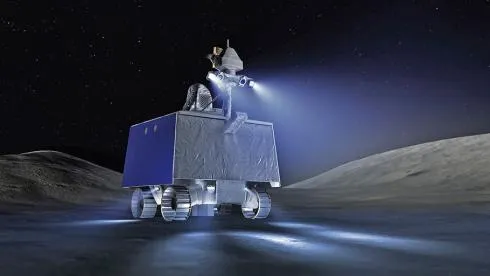
NASA is aware of these risks but is betting that the faster, cheaper approach of the private sector will ultimately deliver more rewards than failures.
“It’s a very exciting time in history,” says Stephen Altemus, president and CEO of Intuitive Machines, which is also developing lander technology for NASA. “If you’re an aerospace engineer, the time to be alive was during Apollo. Well, today, we’re doing it and we’re not necessarily just doing it by the government.”
Keep On Truckin’
Under its Artemis program, NASA plans to land four astronauts on the moon in 2025. But that’s just part of a larger, more ambitious vision. Artemis also intends to establish a base camp that—in tandem with an orbiting station called Gateway—will act as a hub for lunar exploration and scientific research. The base camp will eventually serve as a platform for sending astronauts on to Mars.
Maintaining a sustainable presence on the moon will require some degree of living off the land—what NASA describes as “in-situ resource utilization.” Key to that endeavor will be prospecting for ice particles in the lunar regolith that could one day be mined and turned into water and oxygen for life support, as well as hydrogen for the local production of fuel.
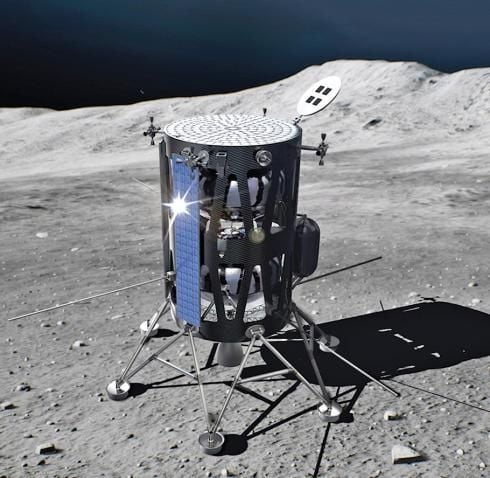
Meanwhile, NASA must be mindful of a critical terrestrial resource that is often in short supply: money. America’s first foray to the moon was federally funded and cost around $25.8 billion. But as Smithsonian’s Shindell observes, Americans’ priorities shifted after the initial thrill of the moon landings. “Apollo was a wonderful program and it achieved things people thought were impossible, but it was a very expensive program that probably would not have happened if it weren’t for the Cold War space race,” he says.
That’s not to say NASA isn’t getting any assistance from taxpayers. Congress allocated $7.5 billion to Artemis in 2023. But the program’s ambitious long-term plans, which include field tests of technology for in-situ resource utilization, will require multiple deliveries of supplies and equipment that could be very costly.
This quandary is what inspired a group of administrators at NASA to tap into the commercial sector by forming CLPS. Private-public partnerships have been successful in sending cargo and astronauts to the International Space Station. Why not turn to the private sector to develop reliable, cost-efficient delivery services to the moon? Through 2028, CLPS has a budget of $2.6 billion, which NASA uses to bankroll lunar projects.
“We leverage the competitive nature among these companies,” says Ryan Stephan, deputy project manager for CLPS. “We think we get much more affordable pricing with competitive models. Typically, NASA would do a single mission for $300 million. NASA would have a difficult time doing that on its own.”
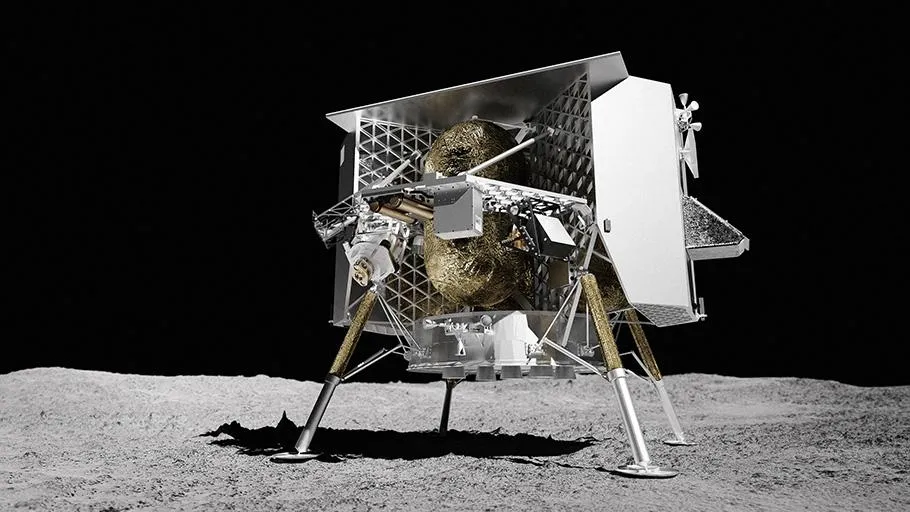
The anticipated reduction in cost reflects, in part, a new approach that would forego the traditional route of building custom-made spacecraft to deploy scientific equipment in favor of a more generalized approach that would utilize landers capable of ferrying several experiments to the moon with a single launch. “If you think about the variety of things that might be in the back of a FedEx truck, that’s kind of how to think about the lander,” says Jones.
Peregrine Mission One, CLPS’ first delivery truck, will carry 21 payloads. Five of those payloads will be NASA science experiments, including the linear energy transfer spectrometer—which will gather data on radiation that could pose risks to astronauts while exploring the lunar surface—and a laser retroreflector that will serve as a permanent location marker to enable precise landings.
Peregrine’s other payloads come from the private sector. Students at Carnegie Mellon University in Pittsburgh have built a 5.5-pound rover named Iris that will detach itself from the underside of one of Peregrine’s payload decks. Other payloads seem strictly for fun and marketing purposes. For instance, a Japanese sports-drink company, Pocari Sweat, is sending a can-shaped capsule that contains messages from children from around the world.
“It’s about engaging with our fans and making the moon accessible to the world,” says Jones. “It connects people here on Earth to the moon in a meaningful way.”
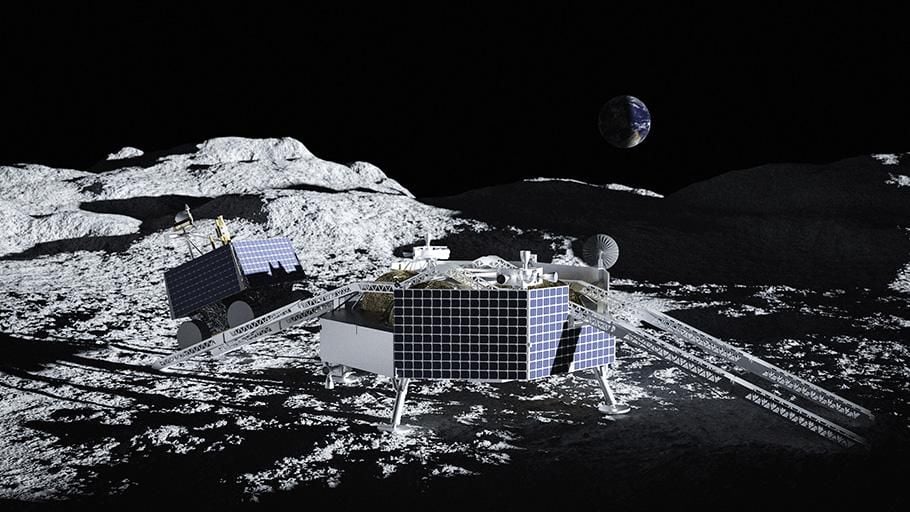
NASA intends to launch eight CLPS missions between now and 2026. The next Astrobotic lander on deck is the much larger Griffin, which has a payload capacity of 1,100 pounds. After launching aboard a SpaceX Falcon Heavy rocket, Griffin will deliver a 992-pound rover named VIPER (Volatiles Investigating Polar Exploration Rover) to the lunar south pole, where it will spend 100 days prospecting for water ice and other potentially useful resources.
Following Griffin, the lunar south pole will receive another visitor: the Nova-C lander manufactured by a Houston-based company, Intuitive Machines. Nova-C’s distinctive design—a six-legged, hexagonal cylinder—is based on a concept originally conceived by NASA under Project Morpheus, which sought to develop a lander capable of vertical takeoff and landing while using propellants that could be manufactured from lunar resources. “It’s like a Ferrari—all handmade,” boasts Altemus about Nova-C.
Nova-C will carry experiments designed to aid future exploration efforts, including technology for navigation beacons that could one day facilitate lunar landings and lunar orbit insertions. But CLPS has also caught the attention of scientists who see the program’s potential for basic research. “Following demonstrated success in reaching the lunar surface, NASA should develop a plan to maximize science return from CLPS by, for example, allowing investigators to propose instrument suites coupled to specific landing sites,” planetary scientists advised in a 2022 report.

In early 2023, NASA did just that when it announced that it had chosen a new landing site for Peregrine Mission One. Initially, Peregrine was going to land on Lacus Mortis, a plain of basaltic lava flows on the northeastern side of the near side of the moon. The updated mission will land near the Gruithuisen Domes, a geographical enigma on the northeastern border of Oceanus Procellarum. Lunar scientists suspect the Domes formed from a sticky magma rich in silica, similar in composition to granite. Yet, on Earth, formations such as these need significant water content and plate tectonics to form. Since these key ingredients don’t exist on the moon, lunar scientists have been puzzling over how these domes formed and evolved over time.
In 2026, NASA hopes to launch a CLPS mission carrying the Lunar Vulkan Imaging and Spectroscopy Explorer (Lunar-VISE), a suite of instruments that will investigate the origin and composition of the Gruithuisen Domes. Meanwhile, according to NASA: “The relocation of Astrobotic’s Peregrine CLPS flight to a mare near the Domes will present complementary and meaningful data to Lunar-VISE without introducing additional risk to the lander.”
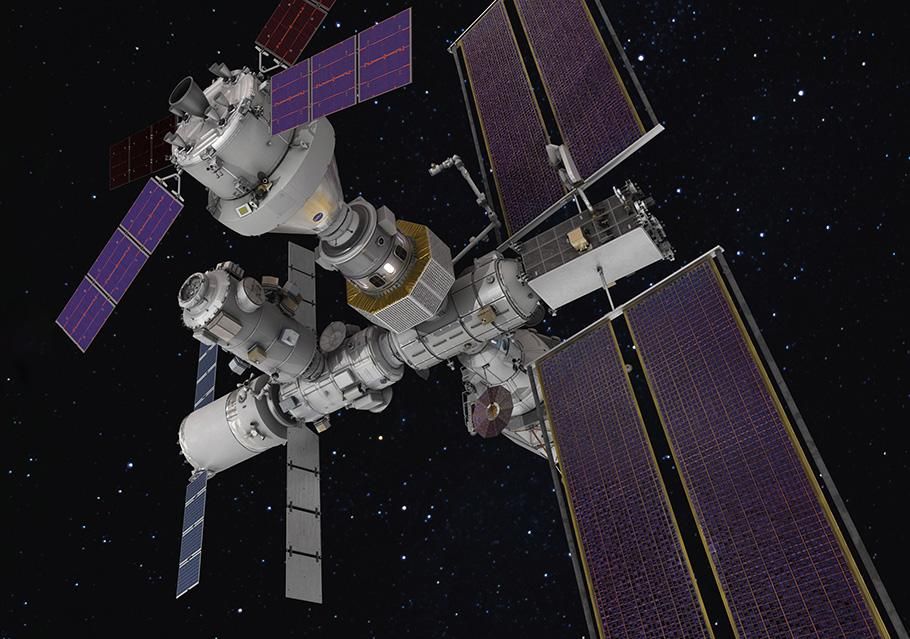
“Shots On Goal”
Peregrine can deliver payloads to the moon at a cost of $1.2 million per kilogram. While that might seem staggering, it’s relatively cheap by space agency standards.
The design of the lander’s thrusters has played a role in keeping costs down. Astrobotic partnered with Frontier Aerospace Corporation to further develop a propulsion system—the Deep Space Engine —that Frontier had initially designed with NASA. Each engine can produce 100 pounds of force, and Peregrine would use five of them to make alterations in flight path or altitude to enter the moon’s orbit and descend to the surface.
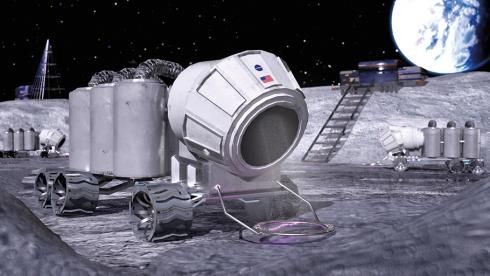
What makes these thrusters distinctive is their propellant mixture, MON-25/MMH—so named because it contains 25 percent of nitric oxide. It has a lower freezing point than other propellants, which saves on the power that would be required for propellant heaters. That, in turn, enables engineers to cut down on the overall mass of the spacecraft, making possible lighter and more flexible designs.
While rocket and lander designs benefit from technologies that hadn’t even been invented during the Apollo era, the task of sending payloads to the moon and having them arrive intact remains a considerable challenge for uncrewed spacecraft—as Russia, Japan, and Israel recently rediscovered. While the moon’s gravity is less than Earth’s, spacecraft are still pulled toward the surface. Perfect timing is required when reducing orbital velocity and altitude to achieve a soft landing.
Can the new landers pull it off? The NASA administrators who spearheaded CLPS were candid about the risks, saying the program would be like taking “shots on goal.” A 50-50 success rate for early missions, they said, would be acceptable.
One of those administrators, Thomas Zurbuchen, then-head of NASA’s science missions, recently left the space agency. Four years after starting CLPS, he acknowledged that the program’s future would depend, in part, on the tolerance for risk. “After how many CLPS failures do we say, ‘Hey, it’s not working?’ ” he said in an interview published last year in the New York Times. “It’s an experiment, right? There is no way to get to the moon otherwise for substantially less than a billion bucks. And that’s what we tried to break, that cost of entry.”
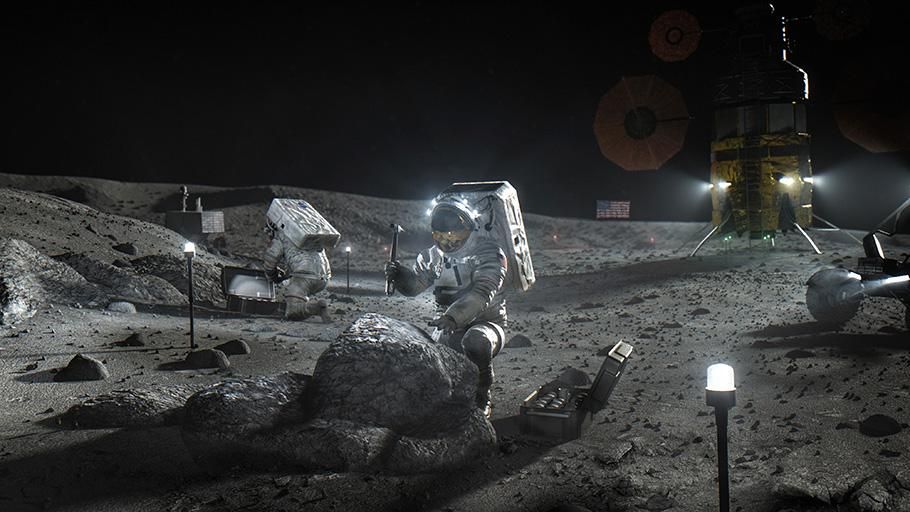
The commercial space sector embodies a culture that moves fast and learns from its mistakes. Anyone who saw video of the spectacular explosion of Space X’s Starship in April understands that this venture has risks. Entrepreneurs like Elon Musk can afford it. But the American public might be less understanding when it’s their tax dollars funding those initial failures.
For now, though, the companies NASA has rallied to return to the moon are permitting themselves to ponder the tremendous potential rewards. “We’re trying to ultimately create a sustainable lifestyle on the moon,” says Jones. “If we can succeed at that, then we can become a true multi-planet species.”
Kellie B. Gormly resides in Pittsburgh and is a regular contributor to such publications as Smithsonian, the Washington Post, History.com, and Woman’s World.
This article is from the Fall issue of Air & Space Quarterly, the National Air and Space Museum's signature magazine that explores topics in aviation and space, from the earliest moments of flight to today. Explore the full issue.
Want to receive ad-free hard-copies of Air & Space Quarterly? Join the Museum's National Air and Space Society to subscribe.
